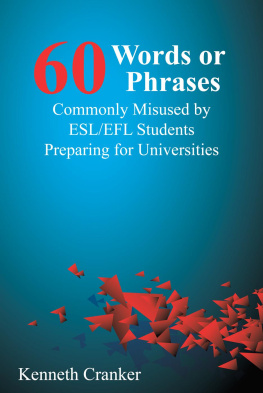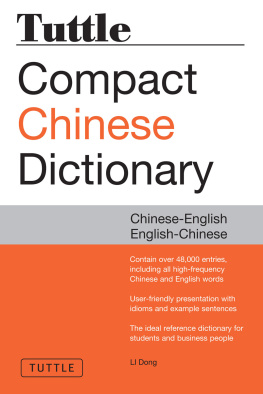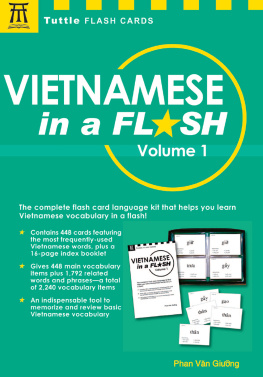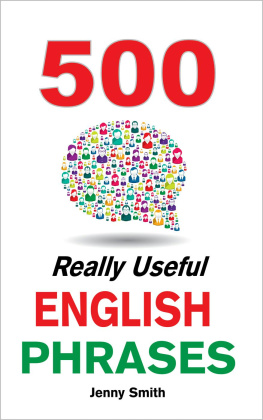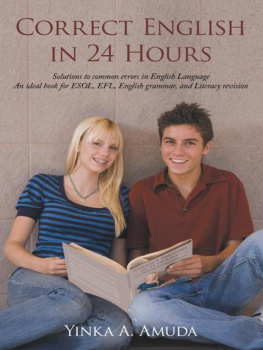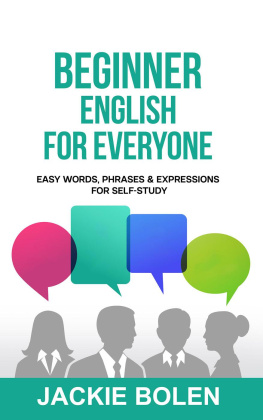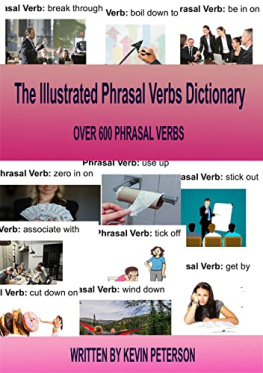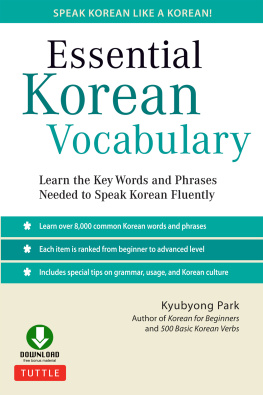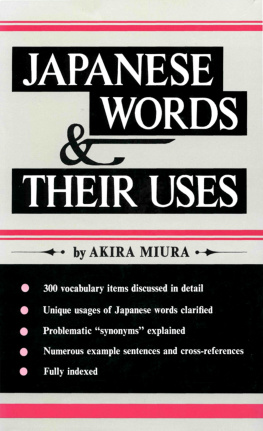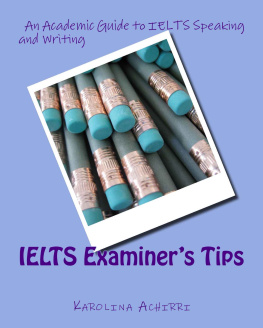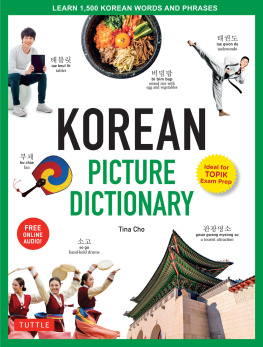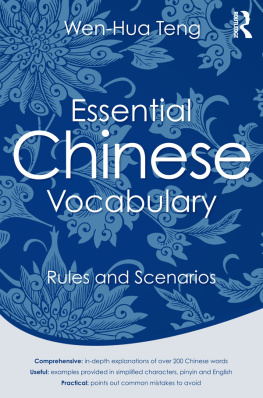Sixty Words or Phrases Commonly Misused by ESL/EFL Students Preparing for Universities
Copyright 2014 by Wayzgoose Press
All rights reserved. No part of this publication may be reproduced, stored in or introduced into a retrieval system, or transmitted, in any form, or by any means (electronic, mechanical, photocopying, recording, or otherwise) without the prior written permission of the copyright owner. Dramatic works contained within this volume are intended only as reading material, and their inclusion does not imply the granting of performance licenses, which must be arranged through the author.
Text by Kenneth Cranker.
Edited by Dorothy E. Zemach. Cover design by DJ Rogers.
Published in the United States by Wayzgoose Press.
Sixty Words and Phrases
Commonly Misused by
ESL/EFL Students
Preparing for Universities
_____________________________
Kenneth Cranker
_____________________________

Table of Contents
T he material in this book was not designed to be a course in and of itself; it was designed to supplement courseware that reviews sentence-level grammar primarily for students who may be conditionally admitted to English-speaking universities, but whose grammar is insufficiently developed to matriculate. It was necessitated by the fact that at high levels of proficiency, because of the vocabulary required, grammatical issues tend to be as much related to word usage as they are to sentence structure. The collection of words/phrases in this book is derived from countless observations of erroneous word-level usage in student writings.
The number of phrases included in this work, sixty, is chosen for study at a rate of two per day over six weeks of classes. That rate allows it to adequately supplement but not dominate a course for general grammar review. It also prevents overload and enables students to digest and internalize the concepts and usage.
Each page includes a word/phrase with its part(s) of speech indicated, some italicized examples of erroneous usage, some italicized examples of correct usage, a brief summary (in a nutshell) of the concepts involved, and a space for the creation of sentences using the featured expressions in specified ways. The erroneous usage is included for students to first identify whether they themselves make those sorts of errors, and then to analyze, discover what is wrong, and possibly discuss why it is incorrect (using language to describe the grammatical difficulty). This languaging can be extremely useful for internalizing grammatical concepts. Only after students have inductively reasoned through the erroneous usage should they examine the correct sentences and see how they exemplify proper usage. Then they should try to construct a summary themselves before checking the in a nutshell section. Finally, they should create their own sentences, pushing themselves to write in a sophisticated, academic (impersonal, at least) style.
There may be several ways for this procedure to work itself out in the classroom, but one way that works is to assign two pages for homework, and then in class briefly discuss the erroneous and correct sentences, elicit student summaries, and finally invite students to share their sentences on the whiteboard or in some other fashion. The class can then critique the sentences not only for correct usage of the target expressions but also for overall sentence level grammaticality, sophistication, and meaning. This process may take 15-20 minutes each day.
A suggested method of testing would be to provide two expressions that had been studied and to require students to create one impersonal, sophisticated sentence incorporating both expressions.
G rammar is much more than verb tenses, articles, clauses, and word order. The challenge for university-bound or intermediate to advanced level writers is to use words and their various forms appropriately. For example, perhaps you have misused the noun analysis where you should have used the verb analyze. This is the type of word-level grammar that this book addresses.
This book contains 60 words/phrases that are commonly misused by writers striving for university level English proficiency. It is suggested that they be studied at the rate of about two per day for smooth acquisition, but you may find that you do not struggle at all with some of them. If that is the case, go on to the next one. By all means, do not pay too much attention to the errors other students tend to make and pick them up!
On each page, check out the examples of misuse, and if you can identify with the error, having made such errors in the past, then continue reading to understand why the errors are incorrect. Then read and re-read the correct examples to understand and deeply absorb how the expressions are properly used. Once you have done that, try to verbalize (put into words) the concepts you understood and compare your understanding with what is described in the in a nutshell section on each page. Finally, create your own sentences with an impersonal, academic tone using the expression in the ways that are specified, and find someone to check them for you for feedback.
These expressions are certainly not the only ones commonly misused by relatively highly proficient multilingual writers of English, but if you can use these 60 properly, your writing will be much more likely to be acceptable to university instructors and other readers.
M isused
1. According to Smith, he stated that insufficient sleep is a common problem. (Only the fact is necessary. There is no need for a reporting verb.)
Next page
